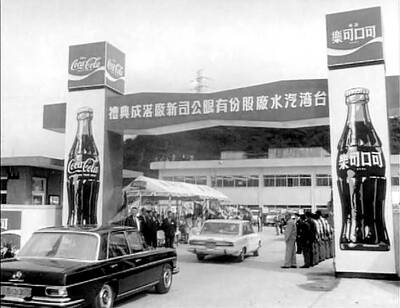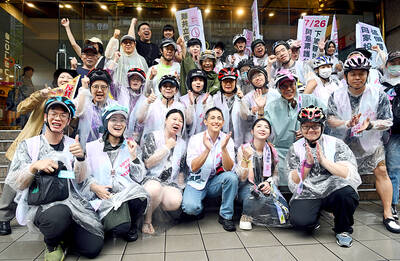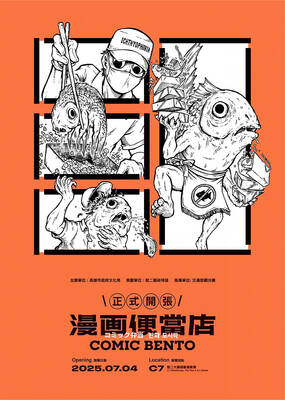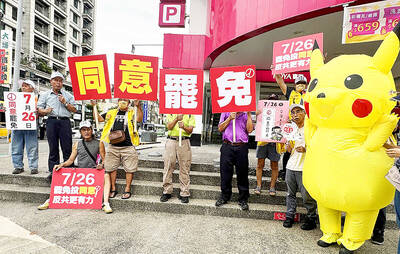The first hit of an Arabic city is always unforgettable. The ground is dusty and dry, old Mercedes cars bump across unmade roads while gleaming 4x4s shoot past nearby on newly built freeways. The air is thickly scented; tobacco, coffee, mint and oil, periodically infused with the melancholic tones of the muezzin, calling the faithful to prayer. As I step out of my hotel in Tripoli’s ramshackle medina, this air of difference wraps itself around me. I pull my coat a little tighter against the surprisingly cool air and walk down to the harbor, where mammoth tankers lie slumbering in the water, glinting through the dusk.
In the half-light, faces are turned towards me with surprise and interest, but no one speaks. Before long I realize that to be a female tourist out and about on her own in Tripoli is still something of a curiosity. I look back, struck by the different looks and races that pass by: angular Egyptian faces, dark Algerian skin, Touareg gliding past draped in head-dresses and robes. It feels slightly alien but not for a moment — even on that first walk on that first night — do I feel unsafe.
How many times was I asked before I came to Libya: Is it safe? I’d smiled and nodded and said that I was going with a group and was sure it would all be fine, but by the time the 10th person had looked anxious for my fate my anxiety levels were starting to rise. But now I was actually here, checked into my cozy room in the El Khan hotel, where the manager had welcomed us into the elegant courtyard like old friends and handed us champagne flutes filled with almond milk, I was already struck by how very different the reality of Libya is to the perception.
‘A FUTURE TO LOOK FORWARD TO’
People come to Libya for two things. Most, like the group of three couples I was with, come for the Roman ruins: Leptis Magna, Sabratha, Cyrenaica are some of the most impressive ancient sites in the world. Others come for the desert, to trek across the vast silent wastes of the Sahara that lie in the south of the country. It’s still not an easy place to visit — the visa process and red tape are almost impossible to negotiate independently (Israeli passport-holders cannot enter the country and Americans can have difficulty) and 90 percent of visitors come on escorted tours, which tend to be expensive.
But new short-break itineraries — I was on one of the first four-night trips with Kirker Holidays — are a more affordable option, giving the chance to experience a country in transition, before tourism has barged through the door and dressed everything in familiar colors. Tripoli itself has the air of a city emerging into the light after a period of darkness; bemused, blinking but determined to make up for the lost years.
And there have been lost years — Lockerbie, sanctions and bombings combined to make Libya one of the most reviled countries on the planet throughout the 1980s and 1990s. “For many years life was difficult,” says Abdul, our guide. “The sanctions hit ordinary people hardest. But now we have oil money, there are constant discoveries of natural gas reserves, and Gaddafi has improved relations with the West. We feel that the good times are coming again, that there is a future to look forward to.”
There is a sense of rebirth in the air. Muammar Gaddafi is still everywhere, of course, pictured in aviator shades and startling purple-satin outfits on countless advertising hoardings. But the country he has dominated for almost 40 years is finally starting to change: laws are being introduced to bring in a minimum wage, grants to start businesses and buy houses, schooling for children. On the first morning we drive out of Tripoli past shiny hotel and apartment towers that look as if they have been imported straight from Dubai. Tripoli is a city on the up.
But if the future is what dominates the Libyan capital, it is the past that defines its other famous cities. We walk through the windswept ruins at Sabratha while the sea shifts and shimmers in the background, the sun glinting off mosaics that have seen off two thousand years of winds, salt and sea. The scale of Sabratha is impressive but time has not been kind; apart from the gaudy theater, reconstructed in the 1920s at Mussolini’s behest during Italy’s colonial rule, there is little that remains standing. Most of it was flattened by an earthquake in 365, what was left was sacked by the Vandals and for me it required too much of a leap of imagination to picture the city as it once was.
Leptis is a different story; although the same earthquake brought many of its 12m columns and walls crashing to the ground — where they lie, unmoved more than 1,600 years later — the limestone edifices and structures have survived far better. It is an astonishing place, with enough of the market, the forum, the circus, the gymnasium and baths in place to gain an idea of the sheer size and scale of the buildings, of how life would have been lived more than 2,000 years ago.
Archaeologists believe that only a third of the site has yet been uncovered, and I sit for a while at the top of the amphitheater, looking out over the Mediterranean, and try to imagine how such a place was constructed without technology and machines, created from ambition and determination and a belief that the lives of slaves were cheap.
Visiting the sites makes you realize how far Libya has yet to come in terms of tourism — and how fortunate this makes those of us who visit now. At Leptis, coaches pull into a dusty car park fringed with ramshackle tourist stalls. In one corner, a barely noticeable, weed-strewn path leads off to one of the greatest — and least visited — Roman sites in the world. When we visited we met only two other tourists on the whole site. Between our day trips to the sites we spend a day in Tripoli — once an ancient city to rival Sabratha and Leptis. Now all that’s left is the occasional Roman pillar built into a medina wall — and the beautiful Marcus Aurelius arch that dates back to 163.
GREAT EXPECTATIONS
If I am honest, it is this — present-day Libya — that I came for as much as its exalted past, and I am delighted to find that an afternoon among the souks and stalls of the medina involves none of the hassle factor of Marrakech or Cairo, or even the incessant banter and comments that come with a solo stroll in Turkey. Far from being the poor, badly-behaved relations of the Arab world, Libyans believe their country to be the refined, wealthy elder statesman — hassling and banter belongs firmly in the world of their Maghreb cousins.
I stroll past market stalls heaped with sequin-studded headscarves, trestle tables groaning beneath sneakers and bags, saucepans and candy, and surprisingly salacious underwear. I happen upon the metalwork souk and peer into dark workshops where men are doing terrifying things with molten metal and bare hands, and come away with a beautiful copper dish, green with age and dust and mine for US$7. I stroll past the gold shops, where nervous-looking men look on as their womenfolk coo and point at the windows crammed with gaudy jewelry that flashes bright yellow in the sun.
On the final morning I walk up to the newer part of town, where Italianate architecture lines streets that could almost be in Florence or Milan. I duck into an art gallery and find an elderly man sitting in the back, reading. He asks me where I come from and when I tell him London he beams; “Dickens,” he says. “Charles Dickens. Do you know Great Expectations?” I shake my head sheepishly and follow his direction upstairs to look at more canvases. “A Tale of Two Cities?” The voice floats up the stairs.
“No, I’m sorry.”
There is a pause. “Little Dorrit?” I blush.
When I come downstairs we have a long conversation about how he used to work in London in the oil industry, and while he wraps a print I’ve bought he tells me about his love affair with Dickens. It’s a little surreal, standing in a Tripoli back street being ticked off by an elderly Libyan for not reading Dickens, but then nothing about this oil-rich, strictly Muslim, misunderstood dictatorship is as I had imagined. Our perception — and expectation — of Libya is so different to the reality that visiting the country is a constant stream of the unexpected, the unusual and the unpredictable. It’s diverting, exciting and it can’t last. Go now.

July 28 to Aug. 3 Former president Chiang Kai-shek (蔣介石) reportedly maintained a simple diet and preferred to drink warm water — but one indulgence he enjoyed was a banned drink: Coca-Cola. Although a Coca-Cola plant was built in Taiwan in 1957, It was only allowed to sell to the US military and other American agencies. However, Chiang’s aides recall procuring the soft drink at US military exchange stores, and there’s also records of the Presidential Office ordering in bulk from Hong Kong. By the 1960s, it wasn’t difficult for those with means or connections to obtain Coca-Cola from the

Taiwan is today going to participate in a world-first experiment in democracy. Twenty-four Chinese Nationalist Party (KMT) lawmakers will face a recall vote, with the results determining if they keep their jobs. Some recalls look safe for the incumbents, other lawmakers appear heading for a fall and many could go either way. Predictions on the outcome vary widely, which is unsurprising — this is the first time worldwide a mass recall has ever been attempted at the national level. Even meteorologists are unclear what will happen. As this paper reported, the interactions between tropical storms Francisco and Com-May could lead to

It looks like a restaurant — but it’s food for the mind. Kaohsiung’s Pier-2 Art Center is currently hosting Comic Bento (漫畫便當店), an immersive and quirky exhibition that spotlights Taiwanese comic and animation artists. The entire show is designed like a playful bento shop, where books, plushies and installations are laid out like food offerings — with a much deeper cultural bite. Visitors first enter what looks like a self-service restaurant. Comics, toys and merchandise are displayed buffet-style in trays typically used for lunch servings. Posters on the walls present each comic as a nutritional label for the stories and an ingredient

Fundamentally, this Saturday’s recall vote on 24 Chinese Nationalist Party (KMT) lawmakers is a democratic battle of wills between hardcore supporters of Taiwan sovereignty and the KMT incumbents’ core supporters. The recall campaigners have a key asset: clarity of purpose. Stripped to the core, their mission is to defend Taiwan’s sovereignty and democracy from the Chinese Communist Party (CCP). They understand a basic truth, the CCP is — in their own words — at war with Taiwan and Western democracies. Their “unrestricted warfare” campaign to undermine and destroy Taiwan from within is explicit, while simultaneously conducting rehearsals almost daily for invasion,